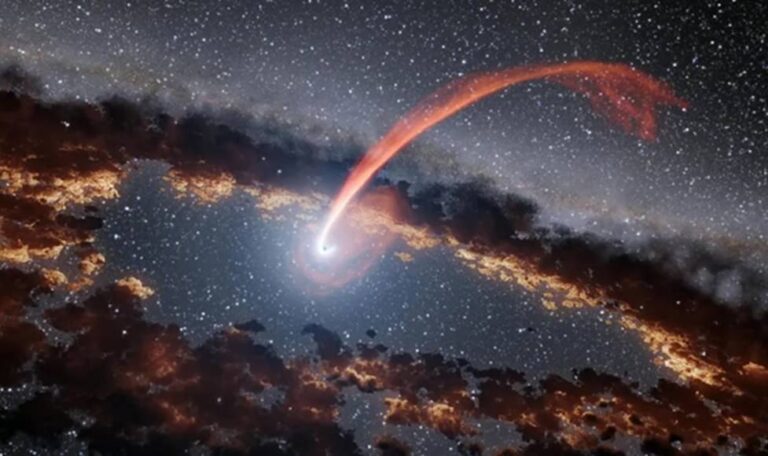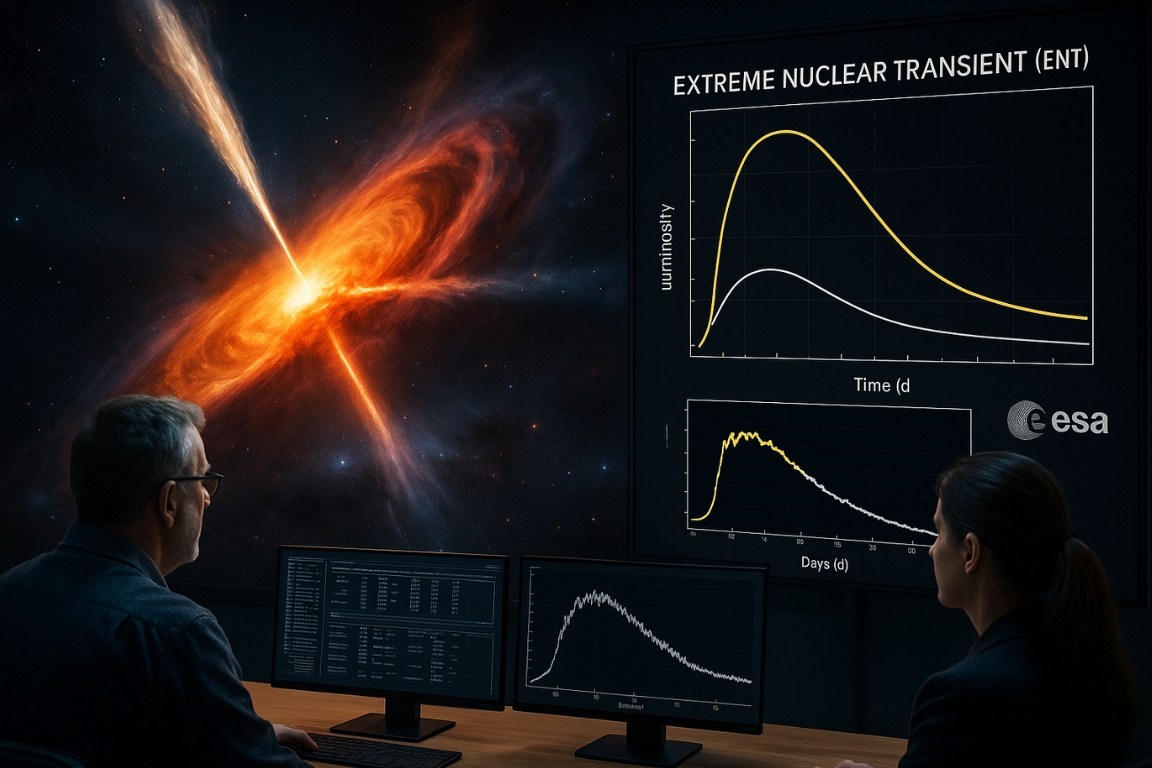Astronomers from the University of Hawaii’s Institute for Astronomy have discovered Extreme Nuclear Transients (ENTs), massive explosions even more powerful than gamma-ray bursts, using data from ESA’s Gaia spacecraft.
What is the Big Bang?
- The Big Bang theory explains the origin of the universe around 13.8 billion years ago.
- It describes how the universe began from a hot, dense point and expanded rapidly, giving rise to galaxies, stars, and planets.
- The Big Bang is considered the largest explosion in cosmic history.

What are Extreme Nuclear Transients (ENTs)?
- ENTs are extremely energetic cosmic explosions, now believed to be the biggest blasts since the Big Bang.
- They happen when a supermassive black hole at a galaxy’s centre pulls in and destroys a very massive star.
- The star’s material is stretched into a thin stream (a process called spaghettification) and huge amounts of electromagnetic energy are released.
How ENTs Differ from Other Events
- Gamma-ray bursts (GRBs): Earlier, GRBs were thought to be the most powerful explosions in the universe. But ENTs actually release 10 times more energy than GRBs.
- Tidal disruption events (TDEs): These happen when a star gets torn apart by a black hole. ENTs are similar, but they occur in bigger galaxies with bigger black holes and are much rarer.
- Fast X-ray transients (FXTs): These are short and weaker bursts of X-rays. ENTs are different because they shine brightly for years instead of just a short time.
BLACK HOLES
- Definition: A black hole is a region in space where gravity is so strong that nothing can escape it, not even light.
- How it forms: Usually formed when a massive star collapses at the end of its life.
- Key Parts:
- Event Horizon: The “point of no return” around a black hole. Once something crosses it, it cannot escape.
- Singularity: The center of the black hole where all its mass is concentrated and gravity is extremely strong.
How Were ENTs Discovered?
- Found by studying long-term data from the Gaia spacecraft.
- First candidates were spotted in 2016 and 2018, with confirmation in 2023 through the Zwicky Transient Facility in California.
- Astronomers looked for bright, long-lived, high-energy events and realised they had found a new category of cosmic explosion.
Why ENTs Are Important
- ENTs stay bright in radio waves for years, so scientists can observe them for a long time.
- They help researchers:
- Study supermassive black holes that existed in the early universe.
- Understand how stars and galaxies interact with black holes.
- Add to knowledge about black holes that are actively pulling in matter.
Conclusion
ENTs show that the universe is not calm but filled with violent, giant explosions. Studying them provides deeper insights into black holes, galaxy formation, and the extreme forces shaping the cosmos.





